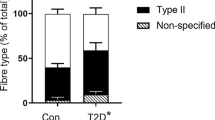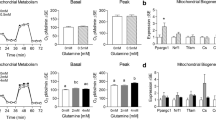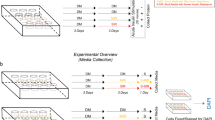Abstract:
In mature human skeletal muscle, insulin-stimulated glucose transport is mediated primarily via the GLUT4 glucose transporter. However, in contrast to mature skeletal muscle, cultured muscle expresses significant levels of the GLUT1 glucose transporter. To assess the relative contribution of these two glucose transporters, we used a novel photolabelling techniques to assess the cell surface abundance of GLUT1 and GLUT4 specifically in primary cultures of human skeletal muscle. We demonstrate that insulin-stimulated glucose transport in cultured human skeletal muscle is mediated by GLUT4, as no effect on GLUT1 appearance at the plasma membrane was noted. Furthermore, GLUT4 mRNA and protein increased twofold (p < 0.05), after differentiation, whereas GLUT1 mRNA and protein decreased 55% (p < 0.005). Incubation of differentiated human skeletal muscle cells with a non-peptide insulin mimetic significantly (p < 0.05) increased glucose uptake and glycogen synthesis. Thus, cultured myotubes are a useful tool to facilitate biological and molecular validation of novel pharmacological agents aimed to improve glucose metabolism in skeletal muscle.
Similar content being viewed by others
Author information
Authors and Affiliations
Additional information
Received 2 January 2003; received after revision 29 January 2003; accepted 12 March 2003
RID="*"
ID="*"Corresponding author.
Rights and permissions
About this article
Cite this article
Al-Khalili, L., Chibalin, A., Kannisto, K. et al. Insulin action in cultured human skeletal muscle cells during differentiation: assessment of cell surface GLUT4 and GLUT1 content. CMLS, Cell. Mol. Life Sci. 60, 991–998 (2003). https://doi.org/10.1007/s00018-003-3001-3
Issue Date:
DOI: https://doi.org/10.1007/s00018-003-3001-3




